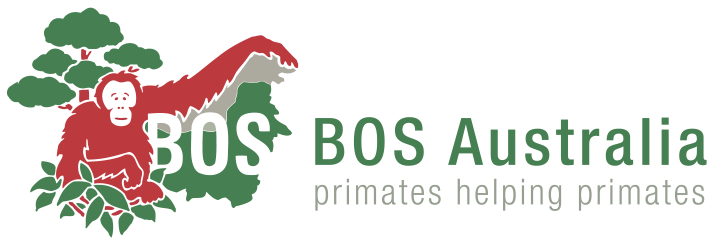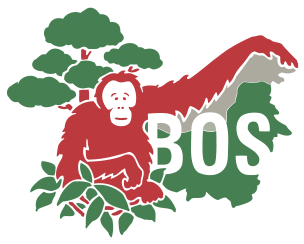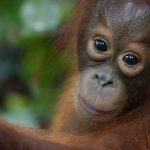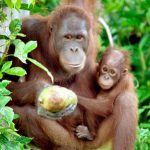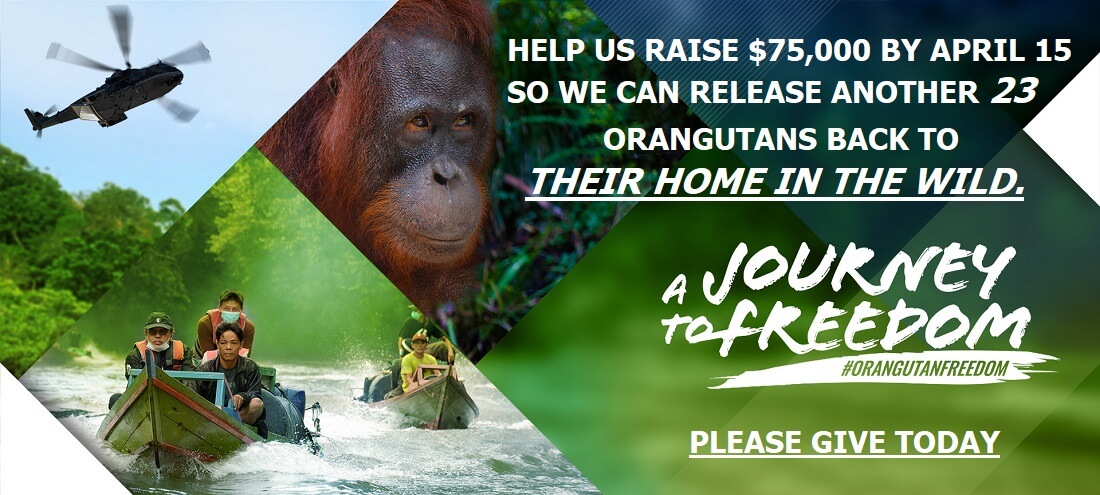AN OLD FACE AND A NEW BABY

Correctly identifying orangutans during observations can be tricky. This is especially true if our Post-Release Monitoring (PRM) team observes orangutans they haven’t spotted for a long time or when the team on duty is not familiar with the orangutans they are monitoring.
Recently, our PRM team from Camp Nles Mamse in the Kehje Sewen Forest, East Kalimantan, set out to conduct a regular patrol. The team that day consisted of Rahmi, Rustam and Junus, who are all junior members of the camp with less patrolling experience than their colleagues.
The three walked towards a point known as Puncak Palem (Palm Peak) and were excited to find a female orangutan with a very young baby in tow. They speculated the orangutans to be Signe, a female we released in December 2016, and her offspring.

But the team had some doubts. The physical characteristics of this orangutan were not entirely consistent with that of Signe’s. In addition, they were not able to pick up a telemetry signal for the orangutan in question, possibly due to depleted transmitter batteries.
The only way the three technicians could identify Signe was through the presence of her baby, because Signe is the only orangutan our team has monitored in the area lately with an infant.
Not wanting to waste precious time, Rahmi, Rustam and Junus immediately observed who they thought to be Signe and her baby and recorded data. However, they were utterly confused when they returned to the camp and looked at their photos taken during observations.
The images showed a female orangutan with protruding pelvic bones, sparse hair, and a large belly. Was this really Signe?

To confirm the identity and health condition of the orangutan, our camp veterinarian immediately rushed to Camp Nles Mamse, anticipating the possibility of Signe requiring medical treatment.
Meanwhile, a senior technician solved the mystery. Thanks to his vast experience, he quickly identified the female as Ajeng, who we released in 2015. Furthermore, our veterinarians confirmed that Ajeng’s physical characteristics were indeed that of the observed orangutan.
We are thrilled to have spotted Ajeng with a newborn, as this is our best marker of success when a reintroduced female gives birth to a baby in the wild.
Now, our vet and PRM team members are searching for Ajeng to be able to track her progress, monitor her health, and above all, determine the sex of her child.
We all hope Ajeng and her new baby stay safe and healthy!
